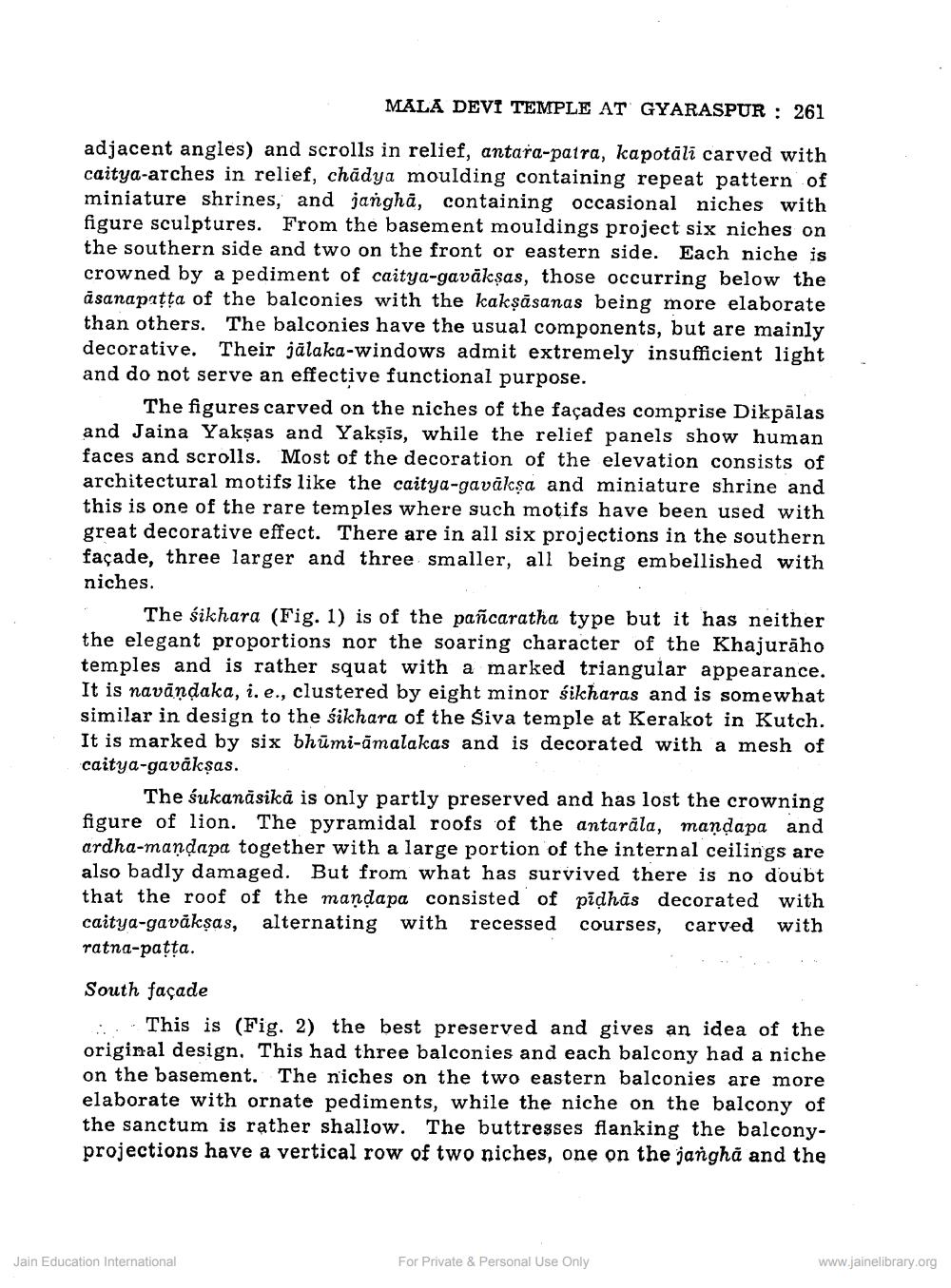Book Title: Maladevi Temple of Gyaraspur Author(s): Krishna Deva Publisher: Z_Mahavir_Jain_Vidyalay_Suvarna_Mahotsav_Granth_Part_1_012002.pdf and Mahavir_Jain_Vidyalay_Suvarna_ View full book textPage 2
________________ MALA DEVI TEMPLE AT GYARASPUR : 261 adjacent angles) and scrolls in relief, antara-patra, kapotāli carved with caitya-arches in relief, chādya moulding containing repeat pattern of miniature shrines, and janghà, containing occasional niches with figure sculptures. From the basement mouldings project six niches on the southern side and two on the front or eastern side. Each niche is crowned by a pediment of caitya-gavākşas, those occurring below the asanapatta of the balconies with the kaksāsanas being more elaborate than others. The balconies have the usual components, but are mainly decorative. Their jālaka-windows admit extremely insufficient light and do not serve an effective functional purpose. The figures carved on the niches of the façades comprise Dikpālas and Jaina Yaksas and Yaksis, while the relief panels show human faces and scrolls. Most of the decoration of the elevation consists of architectural motifs like the caitya-gavālşa and miniature shrine and this is one of the rare temples where such motifs have been used with great decorative effect. There are in all six projections in the southern façade, three larger and three smaller, all being embellished with niches. The śikhara (Fig. 1) is of the pañcaratha type but it has neither the elegant proportions nor the soaring character of the Khajuraho temples and is rather squat with a marked triangular appearance. It is navāndaka, i.e., clustered by eight minor sikharas and is somewhat similar in design to the sikhara of the Siva temple at Kerakot in Kutch. It is marked by six bhūmi-āmalakas and is decorated with a mesh of caitya-gavākşas. The sukanasika is only partly preserved and has lost the crowning figure of lion. The pyramidal roofs of the antarāla, maņdapa and ardha-mandapa together with a large portion of the internal ceilings are also badly damaged. But from what has survived there is no doubt that the roof of the mandapa consisted of pīļhās decorated with caitya-gavākşas, alternating with recessed courses, carved with ratna-patta. South façade ... This is (Fig. 2) the best preserved and gives an idea of the original design. This had three balconies and each balcony had a niche on the basement. The niches on the two eastern balconies are more elaborate with ornate pediments, while the niche on the balcony of the sanctum is rather shallow. The buttresses flanking the balconyprojections have a vertical row of two niches, one on the janghi and the Jain Education International For Private & Personal Use Only www.jainelibrary.orgPage Navigation
1 2 3 4 5 6 7 8 9 10
